| << Chapter < Page | Chapter >> Page > |
We can see that for a point on a circle of radius with a corresponding angle the coordinates and satisfy
The values of the other trigonometric functions can be expressed in terms of and ( [link] ).
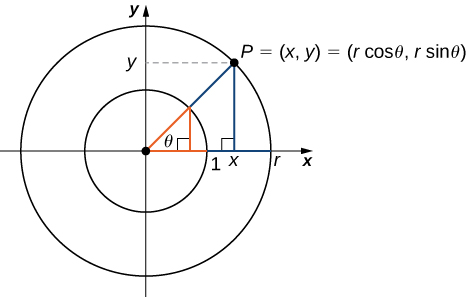
[link] shows the values of sine and cosine at the major angles in the first quadrant. From this table, we can determine the values of sine and cosine at the corresponding angles in the other quadrants. The values of the other trigonometric functions are calculated easily from the values of and
Evaluate each of the following expressions.
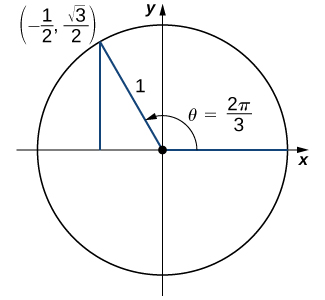
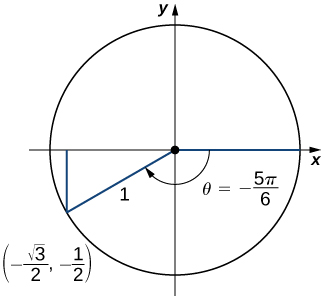
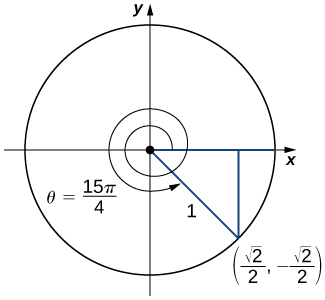
As mentioned earlier, the ratios of the side lengths of a right triangle can be expressed in terms of the trigonometric functions evaluated at either of the acute angles of the triangle. Let be one of the acute angles. Let be the length of the adjacent leg, be the length of the opposite leg, and be the length of the hypotenuse. By inscribing the triangle into a circle of radius as shown in [link] , we see that and satisfy the following relationships with
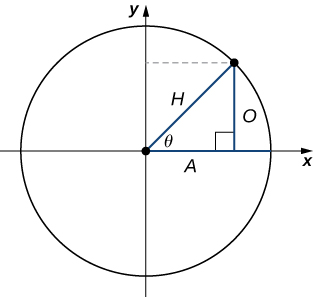
A wooden ramp is to be built with one end on the ground and the other end at the top of a short staircase. If the top of the staircase is ft from the ground and the angle between the ground and the ramp is to be how long does the ramp need to be?
Let denote the length of the ramp. In the following image, we see that needs to satisfy the equation Solving this equation for we see that ft.

A house painter wants to lean a -ft ladder against a house. If the angle between the base of the ladder and the ground is to be how far from the house should she place the base of the ladder?
ft
A trigonometric identity is an equation involving trigonometric functions that is true for all angles for which the functions are defined. We can use the identities to help us solve or simplify equations. The main trigonometric identities are listed next.
Reciprocal identities
Pythagorean identities
Addition and subtraction formulas
Double-angle formulas

Notification Switch
Would you like to follow the 'Calculus volume 1' conversation and receive update notifications?